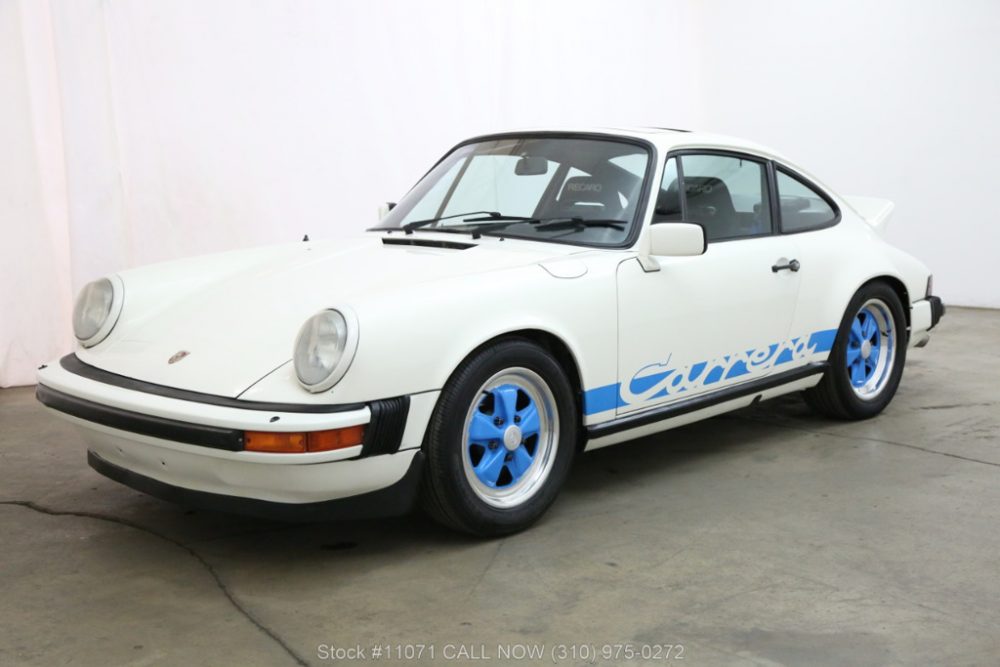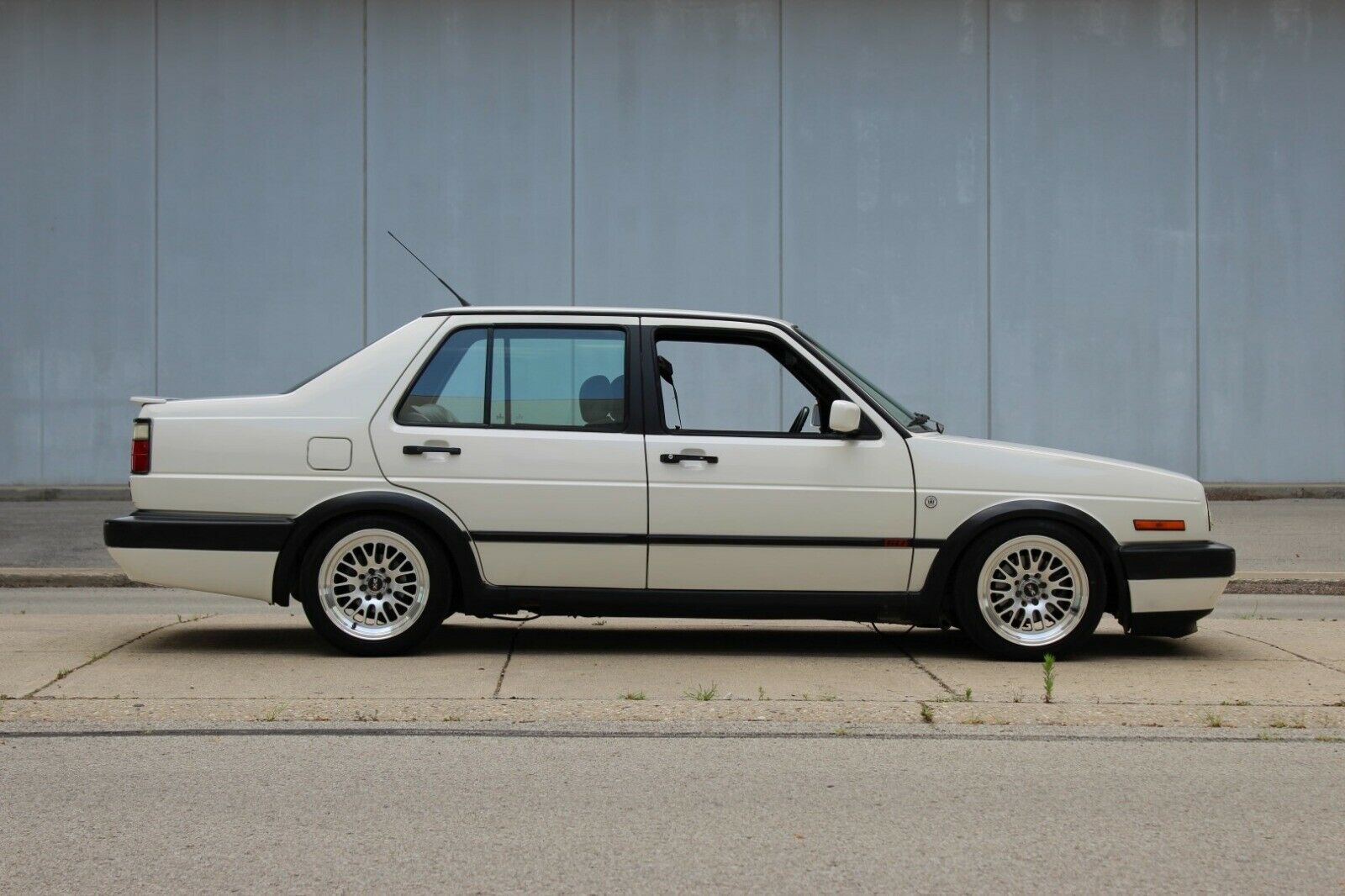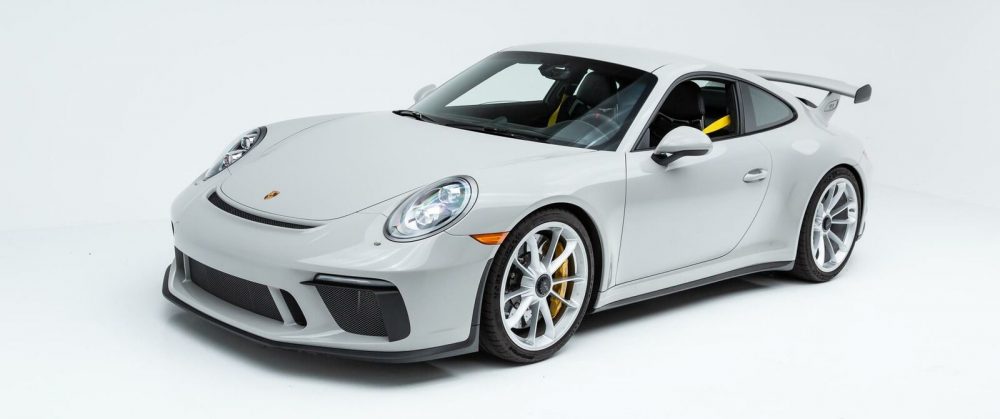Do you want to own a 1973 Carrera RS but can’t swing the purchase price of $600,000? Well, I might have a solution to you. This 1982 Porsche 911SC has the same cool blue wheels, Carrera script, and duck tail deck lid. Thats about it really. In fact, that ’73 RS and this ’82 SC aren’t even the same body. Those cars were longhoods, and this SC naturally is an impact bumper. But still, blue wheels, Carrera script, and duck tail! This car even has blue seatbelts! Now before you get ready to call me crazy down in the comment section, what if I told you this car was $570,000 cheaper than the RS?
Month: July 2019
Update 7/21/19: This Jetta GLI 16V sold for $2,750.
Volkswagen of America’s new ‘Fahrvergnügen’ sales campaign in the early 1990s was, while a marketing ploy and a totally made up neologism, underscoring sporty changes at Volkswagen. The more serious 2.0 16V GTI I’ve already covered recently, but the same motor was available in the more fun-to-drive Passat here, too. Then there was the Corrado, which while it only had 8 valves sported a supercharger. You could that that G60 in the Passat in Europe, too.
Volkswagen’s popular smaller sedan had a healthy dose of upgrades though, too. In ’89, the Jetta GLI 16V had a special Wolfsburg Edition which had added the deeply bolstered Recaro Trophy seats and BBS RA alloys. These were color-matched to the Helios Blue Metallic paint outside. The seats and BBS wheels would carry over for the 1990 model year, but like the GTI the Jetta received the new 9A 2.0 16V and revised bumper/trim of all the A2s. Brakes were updated to 10.1? and dual tailpipes emerged from the new ‘big bumper’ A2 refresh. Central locking and a cassette player were standard, while you could opt for many power options including windows, mirror, anti-lock brakes, trip computer, cruise control and of course a sunroof.
Although the package was essentially quite similar to the GTI, I’ve never quite taken to the 2.0 GLI 16V in the same way. But it’s still very nice to see a clean example hit the market:
CLICK FOR DETAILS: 1991 Volkswagen Jetta GLI 16V on eBay
3 CommentsLast week I took a look at the new 992 Porsche 911 and while it surely is amazing, it is going to be quite pricey. Naturally I start wondering if I’d rather has a mildly optioned 992 C4S or a 991.2 GT3 or GT3 Touring. I think both cars I going to fall somewhere in that $175,000 range and while the new tech in the 992 sure is amazing, you’d hardly find anyone complaining about what is inside a 991.2. Naturally, I started taking a look around what what 991.2 GT3s were out on the market and ran across today’s car. This 2018 GT3 up for sale in Boise, Idaho of all places has just 2,000 miles and is optioned with the rare 6-speed manual. Not to mention it is painted in the always popular Chalk. Who needs new cars, right?
CLICK FOR DETAILS: 2018 Porsche 911 GT3 on eBay
Comments closedMost German car enthusiasts are no longer familiar with the name “DKW”. It’s a shame considering the long history of DKW, whose name originates from the German Dampf-Kraft-Wagen or “steam powered vehicle” – just to give you a sense of the time period they started out. DKW reached its zenith in the 1930s, a time when Germany was experiencing massive growth in its economy and Hitler wanted to turn the Fatherland into a nation of drivers. Ironically, despite his notable efforts supporting Grand Prix racers and the development of the Beetle, pre-War automobile ownership in Germany was amongst the lowest in all of Europe. They were, rather, a nation of riders – motorcycles, to be precise, buying more of the two-wheeled transport than anyone else in Europe. It was what gave companies like BMW a start, for example, but the most successful of all of the pre-War motorcycle companies was DKW. Upon joining the Auto Union in 1932, they began experimenting more with small cars. But the aftermath of World War II meant that the area that DKW, Audi and Horch – 3/4 of the Auto Union company – were stuck in Soviet controlled areas, most of the factories being disassembled and sent back further behind the Iron Curtain as war reparations.
The result was that in the late 1940s and early 1950s, new efforts to resurrect these names were attempted. It’s not very surprising that the attempts were made; after all, imagine if Chevrolet went out of business due to a War; you can bet once things were cleaned up, someone would try to make a Corvette. And sure enough, based upon some pre-War designs the F89 was born. As with most post-War cars in Germany, it was small, affordable and versatile. DKW utilized the platform to create what was, in essence, the first Audi Avant. The F94 chassis you see here was an updated version of the F89, replete with the 2-stroke 3-cylinder engine that the company claimed gave the power of an inline-6 – hence the paradoxical naming strategy of 3=6 for the Sonderklasse. With a space-saving transverse motor driving the front wheels, there was ample room for flexible seating in the rear. Outside was a reasonably aerodynamic, compact design and the small motor ensured reasonable fuel economy – though no promise of speed. Today, nearly 70 years after the design was first sketched out, finding these Universal Kombis is extraordinarily hard – and when they surface in the U.S., they’re typically not in particularly good shape:









